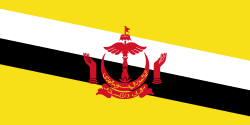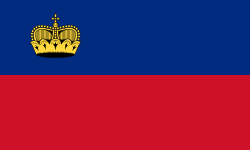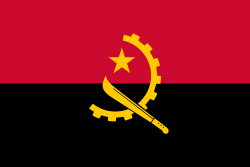Mohamed bin Zayed Al Nahyan
| Mohamed bin Zayed Al Nahyan | |
|---|---|
(c) Prime Minister's Office (GODL-India) | |
| Præsident i Forenede Arabiske Emirater | |
Nuværende | |
| Overtaget embede 14. maj 2022 | |
| Vicepræsident | Mohammed bin Rashid Al Maktoum |
| Foregående | Khalifa bin Zayed Al Nahyan |
| Emir over Abu Dhabi | |
Nuværende | |
| Overtaget embede 13. maj 2022 | |
| Foregående | Khalifa bin Zayed Al Nahyan |
| Personlige detaljer | |
| Født | 11. marts 1961 (62 år) Al-Ain, Forenede Arabiske Emirater |
| Børn | Khalid bin Mohammed bin Zayed Al Nahyan |
| Mor | Fatima bint Mubarak Al Ketbi |
| Far | Zayed bin Sultan Al Nahyan |
| Søskende | Khalifa bin Zayed Al Nahyan, Hamdan bin Zayed bin Sultan Al Nahyan, Mansour bin Zayed Al Nahyan, Hazza bin Zayed bin Sultan Al Nahyan, Abdullah bin Zayed Al Nahyan, Saeed bin Zayed Al Nahyan, Tahnoun bin Zayed Al Nahyan |
| Uddannelsessted | Royal Military Academy Sandhurst |
| Beskæftigelse | International forumdeltager, politiker |
| Udmærkelser | Storkors af Æreslegionen *Republikken Serbiens orden *Uafhængighedskæden *Al-Hussein bin Ali-ordenen *Jerusalemordenen (2008) *Den Hellige Carls Orden *Darjah Yang Mulia Pangkuan Negara[1] *Bundesverdienstkreuz *Kuwaitordenen *Sheik Zayeds orden *Omanordenen *Den Civile Fortjenstorden *Storkors af Orden af Borgerlig Fortjeneste (2008) *Genfødelsesordenen *Orden af den hvide elefant *Kuwaits Liberationsmedalje *Sankt Mikaels og Sankt Georgs orden *Mugunghwa-ordenen *Ordre National du Mérite *Legion of Merit *Marockos tronorden[2] *Sydkorsordenen *Rigets Krones Orden |
| Informationen kan være hentet fra Wikidata. | |
Mohamed bin Zayed bin Sultan Al Nahyan (arabisk: محمد بن زايد بن سلطان آل نهيان; født 11. marts 1961), i daglig tale kendt under sine initialer som MBZ,[3] er præsident for Forenede Arabiske Emirater, [4] hersker over Abu Dhabi og øverstkommanderende for Forenede Arabiske Emiraters væbnede styrker. Han ses som drivkraften bag UAE's interventionistiske udenrigspolitik og er leder af en kampagne mod islamistiske bevægelser i den arabiske verden.[5][6]
I januar 2014, da hans halvbror Khalifa, daværende præsident for Forenede Arabiske Emirater og Sheikh af Abu Dhabi, fik et slagtilfælde, blev Mohamed bin Zayed Al Nahyan Abu Dhabis de facto hersker og kontrollerede næsten alle aspekter af UAE's politik.[7] Mohamed bin Zayed blev betroet den daglige beslutningstagning i emiratet Abu Dhabi som Abu Dhabis kronprins.[8] Akademikere har karakteriseret Mohamed bin Zayed som den stærke leder af et autoritært regime.[9][10][11][12] I 2019 benævnte New York Times ham til den mest magtfulde arabiske hersker og en af de mest magtfulde mænd på jorden.[12][13] Han var med på TIME magazines liste over de 100 mest indflydelsesrige personer i 2019.[14] 13. maj 2022 blev han hersker over Abu Dhabi efter Khalifas død[15] og blev dagen efter valgt til præsident for Forenede Arabiske Emirater. [4]
Referencer
- ^ Navnet er anført på svensk og stammer fra Wikidata hvor navnet endnu ikke findes på dansk.
- ^ Navnet er anført på svensk og stammer fra Wikidata hvor navnet endnu ikke findes på dansk.
- ^ Rhodes, Ben (12. oktober 2018). "A Fatal Abandonment of American Leadership". The Atlantic (amerikansk engelsk). Hentet 13. oktober 2018.
- ^ a b "Federal Supreme Council elects Mohamed bin Zayed as UAE President".
- ^ "The ambitious United Arab Emirates". The Economist. 6. april 2017. Hentet 11. april 2017.
- ^ "Despots are pushing the Arab world to become more secular". The Economist. 2. november 2017.
- ^ Krieg, Andreas (2019). Divided Gulf: The Anatomy of a Crisis (engelsk). Springer. s. 78. ISBN 978-981-13-6314-6.
- ^ "UAE leader returns after lengthy unexplained absence". Middle East Eye. Hentet 27. september 2017.
- ^ Krieg, Andreas (2019). Divided Gulf: The Anatomy of a Crisis (engelsk). Springer. s. 96-98, 101. ISBN 978-981-13-6314-6.
- ^ Davidson, Christopher M. (2021). From Sheikhs to Sultanism: Statecraft and Authority in Saudi Arabia and the UAE (engelsk). C. Hurst (Publishers) Limited. s. 13-14. ISBN 978-1-78738-393-7.
- ^ "UAE's Prince Mohammed Bin Zayed's Growing Influence On The U.S." NPR.org (engelsk). Hentet 2021-07-13.
- ^ a b Worth, Robert F. (9. januar 2020). "Mohammed bin Zayed's Dark Vision of the Middle East's Future". The New York Times (amerikansk engelsk). ISSN 0362-4331. Hentet 12. januar 2020.
- ^ D. Kirkpatrick, David (2. juni 2019). "The Most Powerful Arab Ruler Isn't M.B.S. It's M.B.Z." The New York Times.
- ^ Al Serka, Mariam M. (18. april 2019). "Mohammad Bin Zayed named among Time's 100 most influential people 2019". Gulf News.
- ^ "Mohamed bin Zayed, Sheikhs perform funeral prayer for late UAE President". WAM. 13. maj 2022.
| ||||||||||||||||||||||
| ||||||
|
Medier brugt på denne side
The national flag of Kingdom of Thailand; there are total of 3 colours:
- Red represents the blood spilt to protect Thailand’s independence and often more simply described as representing the nation.
- White represents the religion of Buddhism, the predominant religion of the nation
- Blue represents the monarchy of the nation, which is recognised as the centre of Thai hearts.
Flag of Liechtenstein
Flag of Canada introduced in 1965, using Pantone colors. This design replaced the Canadian Red Ensign design.
Flag of Jamaica. “The sunshine, the land is green, and the people are strong and bold” is the symbolism of the colours of the flag. GOLD represents the natural wealth and beauty of sunlight; GREEN represents hope and agricultural resources; BLACK represents the strength and creativity of the people. The original symbolism, however, was "Hardships there are, but the land is green, and the sun shineth", where BLACK represented the hardships being faced.
Flag of Papua New Guinea
Colours: Pantone 186 C for red and 116 C for yellow
Flag of Iran. The tricolor flag was introduced in 1906, but after the Islamic Revolution of 1979 the Arabic words 'Allahu akbar' ('God is great'), written in the Kufic script of the Qur'an and repeated 22 times, were added to the red and green strips where they border the white central strip and in the middle is the emblem of Iran (which is a stylized Persian alphabet of the Arabic word Allah ("God")).
The official ISIRI standard (translation at FotW) gives two slightly different methods of construction for the flag: a compass-and-straightedge construction used for File:Flag of Iran (official).svg, and a "simplified" construction sheet with rational numbers used for this file.
The Flag of Vatican City State, as per the 2023 w:en:Fundamental Law of Vatican City State, reproducing Annex A which contains the official depiction of this version. See 2023 Fundamental Law of Vatican City State, art. 23, n. 1.
This 2023 flag is very similar to the flag used in the 1929 Fundamental Law of Vatican City State, see here, p. 35. Thus, it is in the public domain.
(c) Prime Minister's Office (GODL-India)
The Prime Minister, Shri Narendra Modi with the Crown Prince of Abu Dhabi, His Highness Sheikh Mohammed Bin Zayed Al Nahyan, at Hyderabad House, in New Delhi on February 11, 2016.
Forfatter/Opretter: Ukendt, Licens: CC0
Flag of the Vatican City, as described in the 2000 w:en:Fundamental Law of Vatican City State (which took effect in Feb. 2001), Article 20, Attachment A. See here and here.





















































